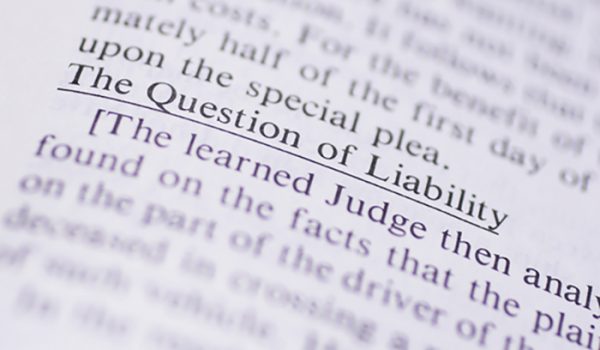If you are a manufacturer of branded products in high demand, or with a significant share of the market, you are vulnerable to counterfeit and knockoff products.[1] Counterfeit product and component part manufacturers seek to capitalize on your sales by marketing deeply discounted, “fake” products to unknowing consumers. These products are usually poorly manufactured, fail to comply with safety standards, and lack adequate consumer protections or product warnings. As such, these counterfeit products promise to damage your brand name, reputation, and present significant risk of related personal injury and products liability litigation.
The Rise of Counterfeiting and its Costs
According to the Counterfeiting Intelligence Bureau, counterfeiting is a global problem that is rapidly expanding to account for $600 billion in losses worldwide.[2] That number is expected to increase, exponentially, over the next decade.[3] While the negative impact on legitimate trade from lost sales is obvious, it is important to note that the increasing prevalence of counterfeit goods has yielded a corresponding rise in related injuries and subsequent litigation. Examples include: counterfeit industrial parts in the airline, aerospace, and defense industries, which have been linked to injuries, accidents, and even plane crashes;[4] and counterfeit brake pads made of compressed grass, woodchips, and cardboard, which have led to thousands of personal injury claims and forced brand-name manufacturers to incur costs to prove the products are fake.[5] A 2012 U.S. Senate committee report on the armed services found some 1,800 cases of suspected counterfeit parts, some of which were installed on civilian aircraft.[6]
Overall, deaths resulting from counterfeit products bear an annual economic cost of over 18 billion U.S. dollars, with an additional $125 million spent annually on treating counterfeit product-related injuries.[7]
Litigating Products Liability Claims Involving Counterfeit Products
Historically, the brand of a product provides consumers with some assurance as to a product’s quality and the manufacturer’s accountability. If counterfeit products cause injury or damage, they are easily mistaken for the brand name products, with claims often asserted against innocent manufacturers instead of counterfeiters who have limited assets and low profile in the United States.
In these cases, quick and accurate product identification becomes critical, but it’s rarely easy, especially in the litigation context. In some cases, the innocent, but accused manufacturer does not have immediate access to the product; in other cases, the product has been destroyed in the accident or has not been preserved. Finally, if the counterfeit is a close imitation or appears identical to the genuine product, significant resources must be expended to demonstrate that the product is counterfeit.
Even if a court ultimately finds that a product is a fake and the manufacturer succeeds in avoiding liability, responding to and managing counterfeit products liability claims is a costly endeavor. Moreover, litigating these claims causes brand-name manufacturers unquantifiable damage — irreversibly tarnishing their brand names and reputations. At the end of the day, the long-term cost of counterfeit products can have immense and detrimental impact on genuine, brand-name product manufacturers.
Preventive Steps to Take
Conventional quality control efforts are often inadequate and unsuccessful against today’s counterfeiters. Manufacturers must stay alert and act preventively to successfully combat the negative economic and reputational effects of counterfeit goods. Taking precautionary measures to prevent the distribution of counterfeit products and/or component parts by developing in-depth strategies. Some combination of the following is recommended:
- Protect your intellectual property, including the unique design features and/or physical appearance of the product, register your brand name and trademark, and be diligent about IP protection.
- Product development and design teams should consider how products can be made harder to replicate. This may also include improving the ability to identify a genuine product through unique markings or proprietary electronic devices.
- Ensure that agreements with vendors, suppliers and distributors strongly disincentivize both knowing and unknowing contamination of the supply chain with counterfeit products and component parts, and distribution/sales of knock off products.
- Actively monitor the marketplace for counterfeit products. Develop a corporate strategy on how to handle counterfeiters and manufacturers/sellers of knock off products which includes a multi-faceted approach using legal, business and public relations resources.
Manufacturers, industries, and products vary widely. Each manufacturer should seek an individualized solution to combat counterfeit products in your market and to reduce your brand’s exposure to counterfeit product liability. For more information, contact Beth Naylor of Frost Brown Todd’s Product Liability practice.
*Georgia T. Connally contributed to this article.
[1] Knockoff products are distinguishable from counterfeit products in that they imitate or copy the physical appearance of other products but do not copy the brand name or logo. For the purpose of this article “counterfeit” will be used to describe both types unless the distinction is essential.
[2] Zurich Financial Services, Ltd., “Risktopics,” (January 2013), at p. 1, found here; See also ICC-Counterfeiting Intelligence Bureau, “Report on Trade Impacts” ICC-CCS.ORG, found here.
[3] US Chamber of Commerce, “Measuring the Magnitude of Global Counterfeiting,” at p.9., found here.
[4]US Chamber of Commerce, “Measuring the Magnitude of Global Counterfeiting,” at p.9., found here (citing Chaudhry, P. E. and Walsh, G. E. (1996). “An Assessment of the Impact of Counterfeiting in International Markets: The Piracy Paradox Persists,” The Colombia Journal of World Business, Fall 1996, p. 36; also citing “Inquiry Into Counterfeit Electronic Parts in the Department of Defense Supply Chain,” Report of the Committee on Armed Services, U.S. Senate, 112th Congress, 2nd Session, 5.21.2012, http://www. armed-services.senate.gov/imo/media/doc/Counterfeit-Electronic-Parts.pdf; Aerospace Industries Association. (2011). Counterfeit Parts: Increasing Awareness and Developing Countermeasures, http://www.aia-aerospace.org/assets/counterfeit-web11.pdf ).
[5] See e.g. William Horobin and Greg Bensinger, L’Oréal, eBay Settle Dispute Over Counterfeit Goods, Wall Street Journal., Jan. 15, 2014.
[6] US Chamber of Commerce, “Measuring the Magnitude of Global Counterfeiting,” at p.9., found here.
[7] Id.

